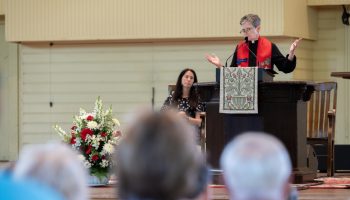MAX ZAMBRANO – STAFF WRITER
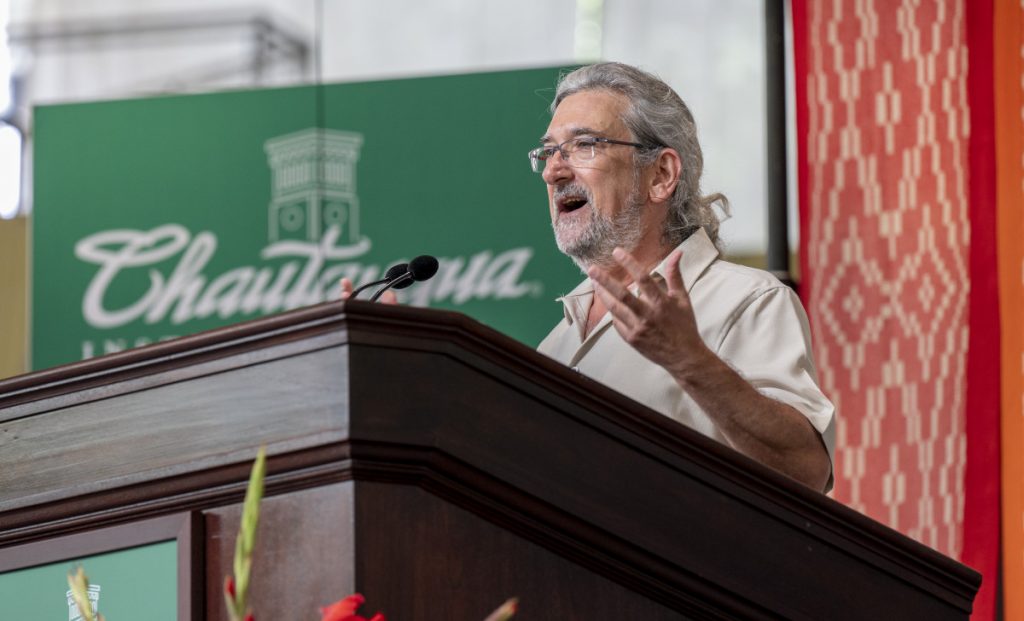
In the same way he would begin the opening lecture of his “Sacred Drugs” class at Emory University, Gary Laderman posed this question to a cooked, early July Amphitheater: How do you define religion?
“I would venture to say there’s no doubt we would not all agree,” said Laderman, the Goodrich C. White Professor of American Religious History and Cultures at Emory. “We would have as many different answers as people here.”
Laderman noted, as Margarita Simon Guillory did in her Tuesday lecture, that religion is constantly changing. He rhetorically questioned if religion as a word and concept changed over time, and if so, what lies at its core — if there is a core.
Religion, however, has always involved — in one way or another — drugs, Laderman said.
At 1 p.m. Wednesday, July 7 in the Amphitheater, Laderman presented his lecture, “Faith in Drugs: America’s Religious Future,” the final of Week Two’s Interfaith Lecture Series, themed “New Frontiers: Exploring the Future of Religion in America.”
In defining religion, Laderman was admittedly hesitant — because before Western languages created the word “religion,” there was no word for it.
“I think of religion in the same way Supreme Court Justice Potter Stewart felt about pornography in a 1964 Supreme Court ruling: ‘I know it when I see it,’ ” Laderman said.
He said that while many religions have at least one God, it was not necessarily required. Rather, Laderman looked deeper, at indigenous cultures, for instance, where spiritual practices were tied to everyday tasks like fishing and farming.
In addition, Laderman said people are likely religious in ways they may not recognize. One might identify as a Reform Jew, he said, but there are more religious behaviors and experiences in their life.
Religion crosses the entire spectrum of good and evil, so it is as much about harmony and transformation as it is about hatred and conflict, he said.
“Humans are fundamentally religious,” he said. “It’s part of what being human is.”
Atheists push back on this testament, Laderman said, but he argued that by going beyond the notion of God, one would find daily parts of life contain elements of religion.
One example unrelated to drugs is the Pledge of Allegiance, Laderman said. Furthermore, presidents always use religious language to promote the United States as a sacred, revered place in the world.
Then, Laderman took the Amp on a trip.
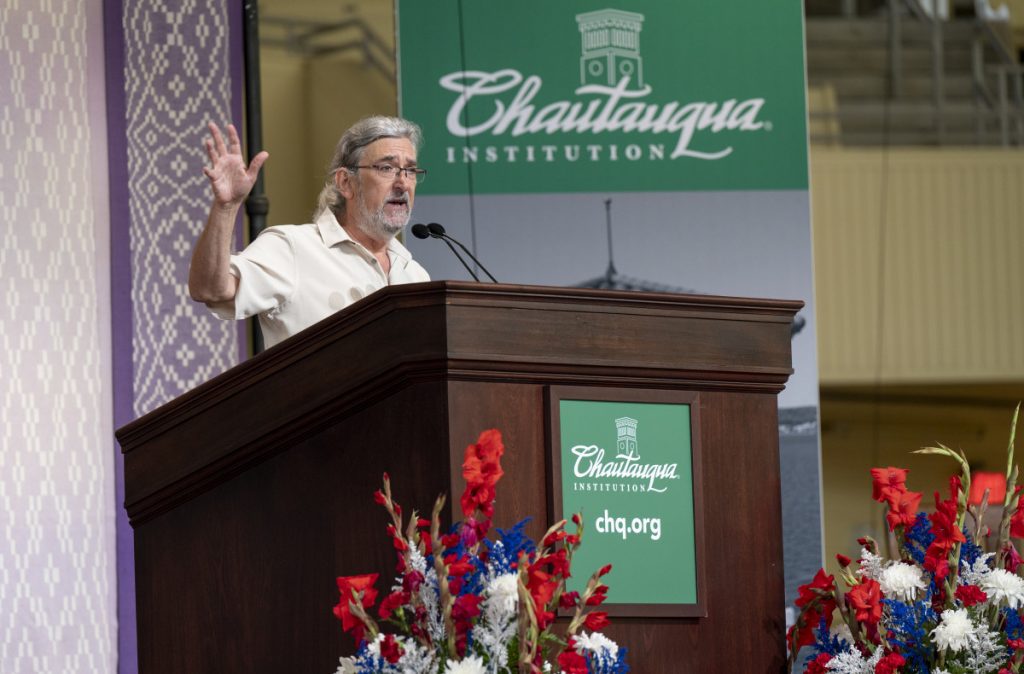
He read a quote from University of California, Los Angeles, psychopharmacologist Ronald Siegel’s book Intoxication: The Universal Drive for Mind-Altering Substances, in which he writes about human evolution and humans’ passion for drugs.
“Our nervous system, like those of rodents and primates, is arranged to respond to chemical intoxicants in much the same way it responds to rewards of food, drink and sex,” according to Siegel’s book. “Throughout our entire history as a species, intoxication has functioned like the basic drives of hunger, thirst and sex.”
Laderman contended some of his propositions might be “wacko, far-out theories,” but some are rooted in science, medicine, history and religious studies.
Some scholars, he said, argue humans accidentally consumed psychoactive drugs, perhaps by eating a mushroom, and this birthed religious experiences and sensibilities.
He pointed to soma in Hinduism, a plant offered to the gods during a sacrifice, and then consumed by the preacher and sacrificer, which likely offered hallucinogenic effects. Laderman also said recent archaeological discoveries show cannabis was used in some ancient Asian rituals. Ancient Greece used wine during different rituals, too, he said.
This wine was not only different than modern wine, he said, but some argue — controversially — that it contained psychedelics and hallucinogens, right at the beginning of Christianity.
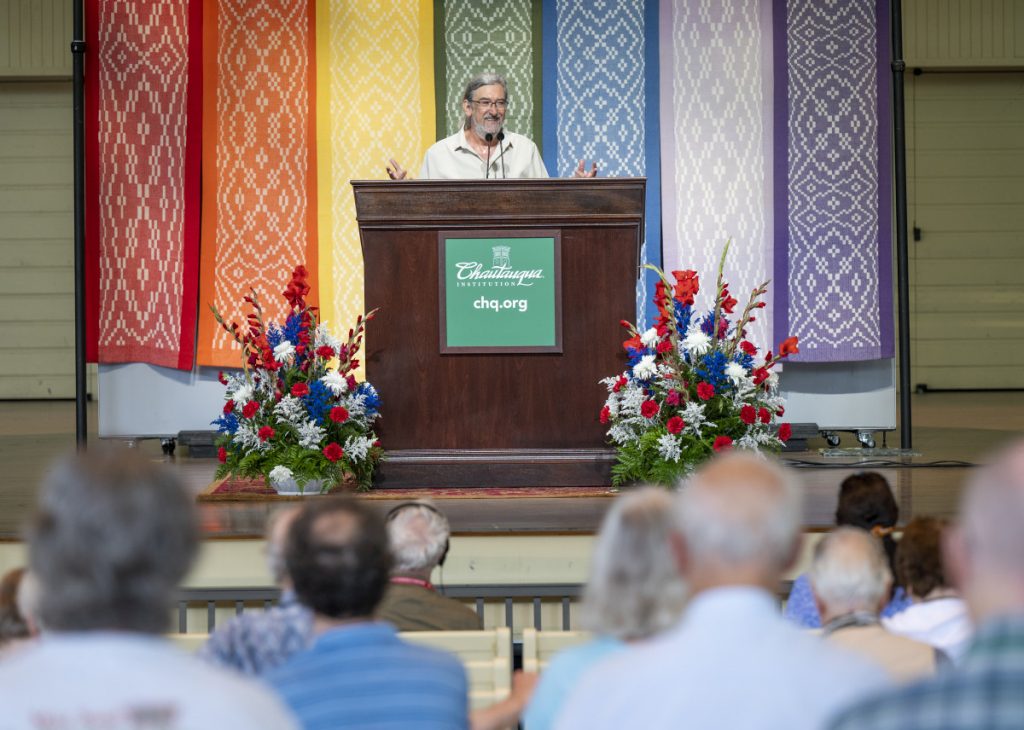
Looking at the Americas, Laderman said there are numerous plants with psychoactive chemicals, like ayahuasca and peyote, involved in indigenous ritual.
“This linkage between religion and culture shouldn’t be surprising,” Laderman said. “It is clear that religious life — at certain times, places and circumstances — was tied to the consumption of drugs.”
Laderman, referencing historian Marcy Norton’s book, Sacred Gifts, Profane Pleasures: A History of Tobacco and Chocolate in the Atlantic World, noted that in the pre-Columbian Americas, tobacco and chocolate (which is a psychoactive drug) linked humans to divine forces and the cosmos. But, in post-Columbian Europe, these same drugs were seen as undermining institutional Christianity.
“For one culture, these were divine and revered plants that can help people connect to the cosmos,” Laderman said. “In another culture, it was a sign of the devil.”
Drugs became part of capitalist, colonialist Europe, Laderman said, under the same pretenses of racism that claimed societies in the Americas were inferior to that of Western Europe. These same notions applied to Christian greed, he said.
Religion is even rooted in fighting drug addiction, Laderman said, such as 12-step programs such as Alcoholics Anonymous. AA’s second step requires participants to acknowledge a power greater than themselves.
Laderman then focused on the future of drugs and religion in the U.S.
“Religion ain’t the same as it was a decade or two ago,” he said.
A few factors here are generational change, increasing politicization of religion and popular culture, he said.
Celebrities have provided answers to people asking questions about aging, death and ideals people strive for in life, Laderman said, and this may be occurring more frequently from celebrities than preachers or rabbis.
Laderman argued there is no center of religion.
“Religion, for me, is about the body, so what sacred sources help us cope with our bodies?” he said. “Where do we see that happening?”
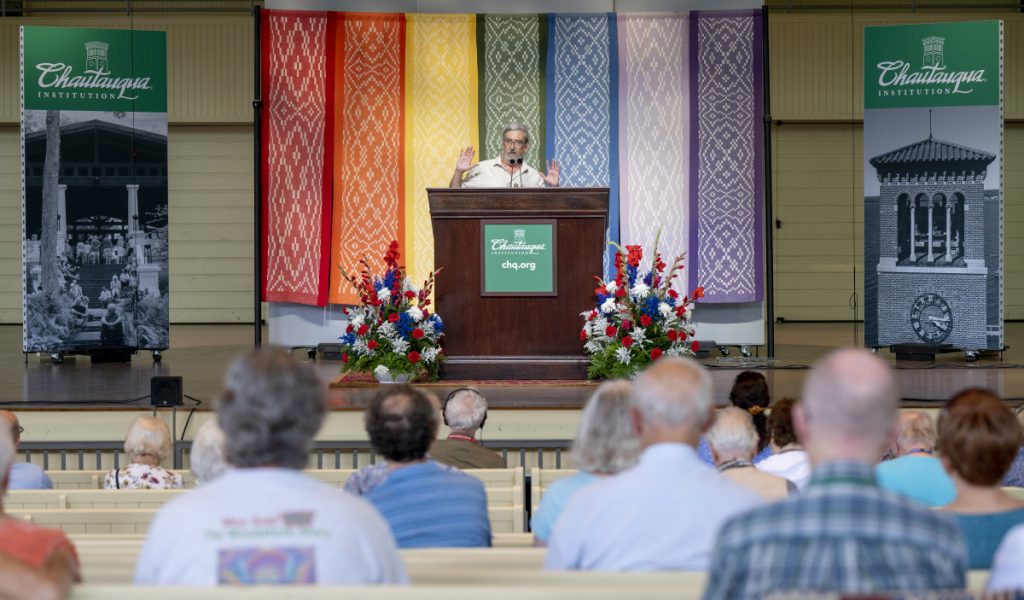
Laderman then posed another question: Is drinking coffee, a drug, religious?
He doesn’t contend drugs are religion, but coffee is historically tied to religion. Hundreds of years ago, Muslim Sufis in Yemen would drink coffee to stay awake all night during ceremonies and to build a connection with God during chants.
“Today, the ritual of drinking coffee is religious,” Laderman said. “It’s beyond just ‘I need to stay awake.’ That ritual, whether at the coffee house or at home, is essential in many ways from maintaining order and ensuring consistency in our lives.”
Religion is not just a metaphysical concept, but a terrestrial one that helps ground humans in this world, Laderman said. Coffee helps people stay focused, attentive and get through the world, he said.
To illustrate coffee’s importance, Laderman looked at Michael Pollan’s forthcoming book, This is Your Mind on Plants. In it, Pollan describes caffeine withdrawal symptoms, ranging from horrendous in the first few days to a feeling of incompleteness in the following weeks. Pollan described having a hard time coming back into consciousness in the mornings and always being “behind the curve” to coffee and tea drinkers. He missed the way coffee ordered his day.
Laderman said we have a faith in doctors and medicine that mainstream pharmaceuticals will help our bodies.
“How we think about our bodies, our health, disease and illness has been completely reshaped by pharmaceutical companies,” he said.
Finally, Laderman briefly touched on psychedelics like psilocybin and ecstasy. He said research is unfolding in this “psychedelic renaissance” where people are seeing these as “miracle drugs” that help with depression, post-traumatic stress and other disorders.
They also help terminally ill patients cope with death anxiety. They produce an experience that leads to ego dissolution and new understandings of humans’ place in the cosmos, making the reality of death less fearful.
“I’m finding in these treatments in general, but also to death,” he said. “The clarity of connection between the two is right in front of our face.”



